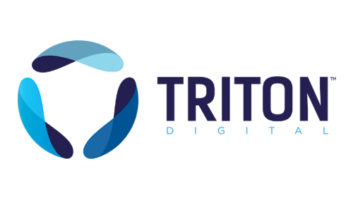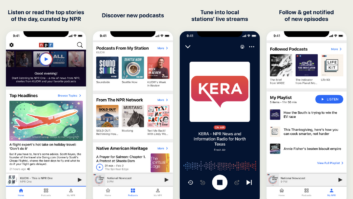We must boost HD Radio power to improve indoor and portable HD Radio reception. A solution can’t come too soon. But we cannot trade a solution to one problem for a new set of unacceptable long-term outcomes. HD power should — and can be — increased in ways that will protect existing analog radio listening, particularly the listening experience for the vast numbers of people who tune in while in their cars.
To provide the Federal Communications Commission and industry with the research needed to inform sound decision-making about HD power levels, NPR Labs has completed an intensive five-month study into the issue. While the final reports won’t be released for several weeks, the topline results were unveiled at the NAB Radio Show in Philadelphia — and it is sobering information all in radio should understand.
To iBiquity’s credit, they have now endorsed the expedited deployment of asymmetrical power and single-frequency network booster solutions that create sensible increase alternatives, particularly for congested markets.
Consumers are drivers
NPR Labs comes to this work as an unabashed advocate of HD Radio, indeed as one of its leading and most enthusiastic innovators. Nearly two-thirds of public radio stations are operating digitally (more than 460 stations) and public radio has spearheaded both multicasting and efficient bitrate coding to add new program channels and new datacasting services.

Based on initial results of the tests, listeners noticed interference in the audio, with nearly half indicating they would likely turn off the radio when power was turned up to –14 dB and –10 dB on closely-spaced stations with lightly processed formats such as news and classical music in some portions of a coverage area, according to Dr. Ellyn Sheffield of NPR Labs and Towson University. Vertical axis is percentage of listeners who would continue to listen; horizontal is signal strength of the desired station over the undesired interfering station. HD Radio presents the opportunity for all radio broadcasters to create important public service enhancements unavailable to our analog audiences. Captioned radio for those who are Deaf and hard of hearing is just one recent example of NPR Labs’ innovations with HD.
While we remain focused on HD’s all-digital (if distant) future, we will be living in a hybrid digital radio system for a long time. Today’s total radio analog audience is at an all-time high of 238 million, and the dominant day-parts remain morning and afternoon drive time.
This is the bedrock of our industry — both commercial and non-commercial. Our shared audiences do not sit at home in their easy chairs carefully attending to a meticulously installed high-fidelity receiver in their living rooms. Today, the driving public drives the radio industry.
We need to know what people listening in their cars will hear when the power levels are increased, and to carefully document whether the quality of what they hear will lead them to turn us off. We also need an appreciation for how power increases may affect especially vulnerable analog radio reading services for those who are blind or print-impaired, and how NCE stations might be uniquely affected — areas that had not been previously studied. That’s why NPR Labs embarked on our recent study.
Our studies were informed and made more robust by healthy debate with our commercial colleagues and other interested industry stakeholders. For example, our commercial colleagues insisted that laboratory-generated audio did not possess the same qualities as field-collected audio, and within the time constraints of our study we had to agree with them.
Impact inside protected contour
Thus, we relied solely on field-collected audio and exclusively analyzed impact inside the protected contour. This is the first time that mobile analog IBOC interference has been the basis for a study of listener behavior.
And we studied only single-inteferor scenarios to determine whether a single station’s power increase could affect an adjacent station’s protected audience. Our commercial colleagues urged us to collect data from more stations at higher D/U (desired vs. undesired signal power) ratios, and we agreed to do that as well. We agreed that data at these higher D/Us is critical to understanding at what point interference effects from higher-power IBOC become imperceptible as listeners drive toward the desired station’s transmitter.
By our count, NPR accommodated all technical input of our commercial colleagues. Thus it is surprising to us that iBiquity has expressed some concerns about the structure of our tests and appear to be questioning the credibility of the results.
We make this offer in the interest of full disclosure and with high confidence in this work: Select any reputable independent institution with international expertise in the propagation and cognitive sciences and we will be pleased to submit our study for review and accuracy assessments — alongside the studies produced by iBiquity and the Joint Parties.
History might teach us that better modeling and deeper study of the dual-antenna issue might have saved a lot of stations a lot of money and aggravation as we learned about the critical importance of matching vertical plane lobes. Not to mention the original iBiquity reports to the National Radio Systems Committee that predicted comparable coverage to analog at 1 percent power levels.
And better testing did lead to the “switch in time” adoption of the HD Coder, frankly saving IBOC from deploying a disastrously substandard audio system in 2003. We felt a few weeks of added study on high-power IBOC was critical and hardly fatal to this otherwise compelling technology.
By the time you read this, we will have made our topline findings fully public. Our summer’s intensive study should be reviewed and understood by all with a stake in radio’s digital future. Our results are telling — and in some cases, surprising:
- • There is a strong relationship between formats and susceptibility to IBOC interference, with speech and classical programming being especially vulnerable.
- • Closely spaced high power operations to noncommercial educational FM stations (public, religious, community) will be especially as risk to tune out among listeners.
- • Interference effects do not go away the closer you get to the transmitter until reaching approximately 20 dB D/U.
- • While there is no material impact on SCA operations at higher levels of HD power from 1st adjacent effects, host interference is material, and is surprisingly greatest among the newer receivers tested.
- • Listener ratings for analog signals actually improved in the presence of higher power IBOC interference at lower desired station signal strengths (when automotive receivers blended to monophonic reception).
- • Road noise and air-handler fans decreased listener sensitivity to IBOC interference, particularly at the higher 60 mph tested speed.
What should these factors mean in proposing a well-supported regulatory proposal for managing higher power HD operations?
NPR Labs and public radio will continue to be a strong a voice for HD Radio’s growth in the future, as we have in the past. Lab’s studies have contributed to many HD innovations, starting with NPR’s 2003 Tomorrow Radio Project, which led to the standardization of multicasting, and to the 2009 recognition of Washington public station WAMU(FM) as multicast station of the year for its HD2 Bluegrass Country Channel. Our work contributed to the development of the Broadcast Traffic Consortium, the first digital radio reading service now on air at KJZZ(FM) in Phoenix (SunSounds of Arizona) and the world’s first national demonstration of captioned radio.
We are committed to building on public radio’s past achievements — and we are equally committed to working with our commercial colleagues and iBiquity to advance HD Radio.
Lets crank up the power soonest — but only at levels and with safeguards that make sense for all of us, whether music, speech, commercial, public or religious stations. Watch these pages as well as those of RW Engineering Extra for details of our findings on high-power IBOC.
Starling is vice president, chief technology officer for NPR and executive director of NPR Labs and the new Technology Research Center within NPR Distribution (www.nprlabs.org).
RW welcomes other points of view.












